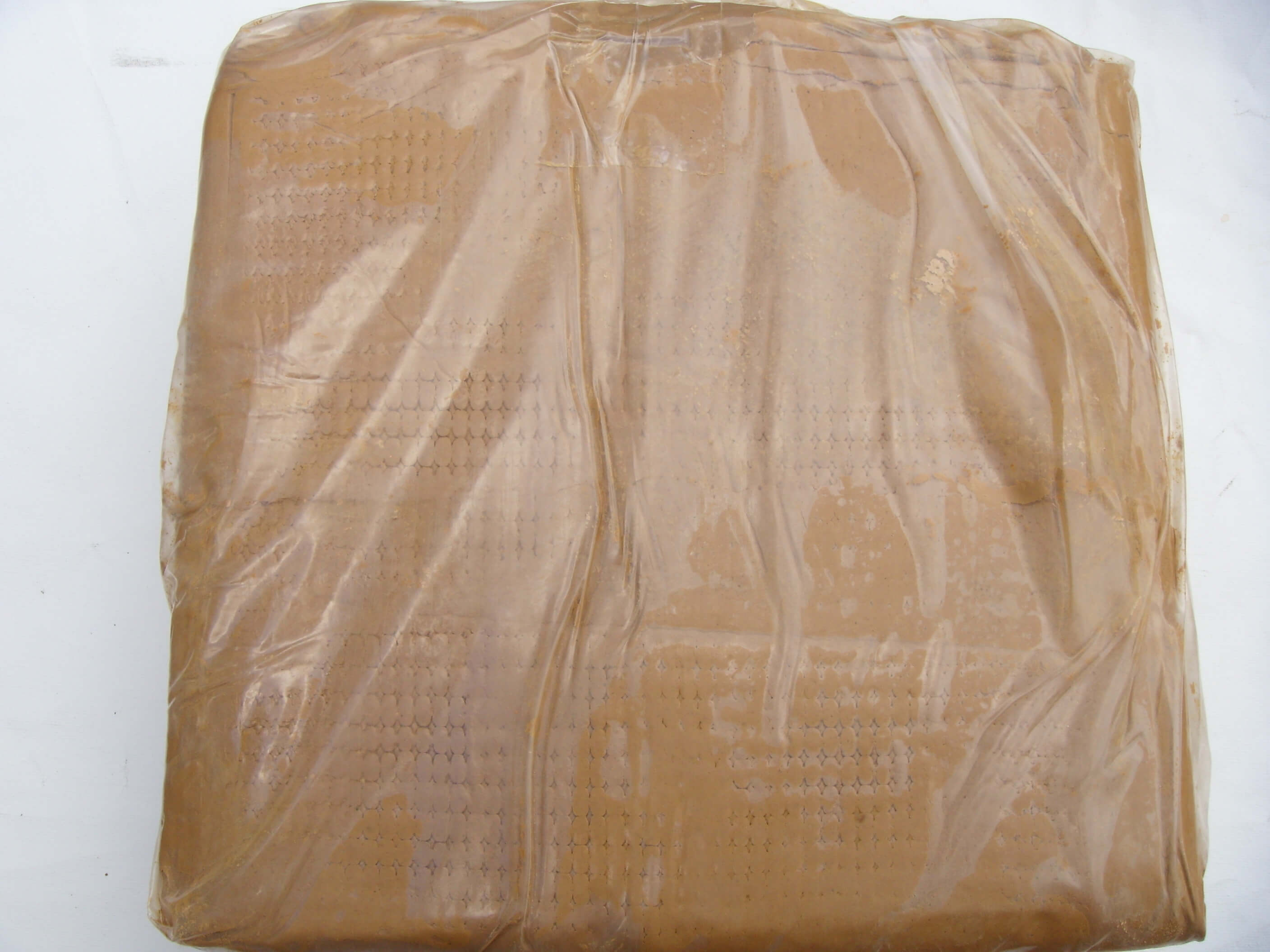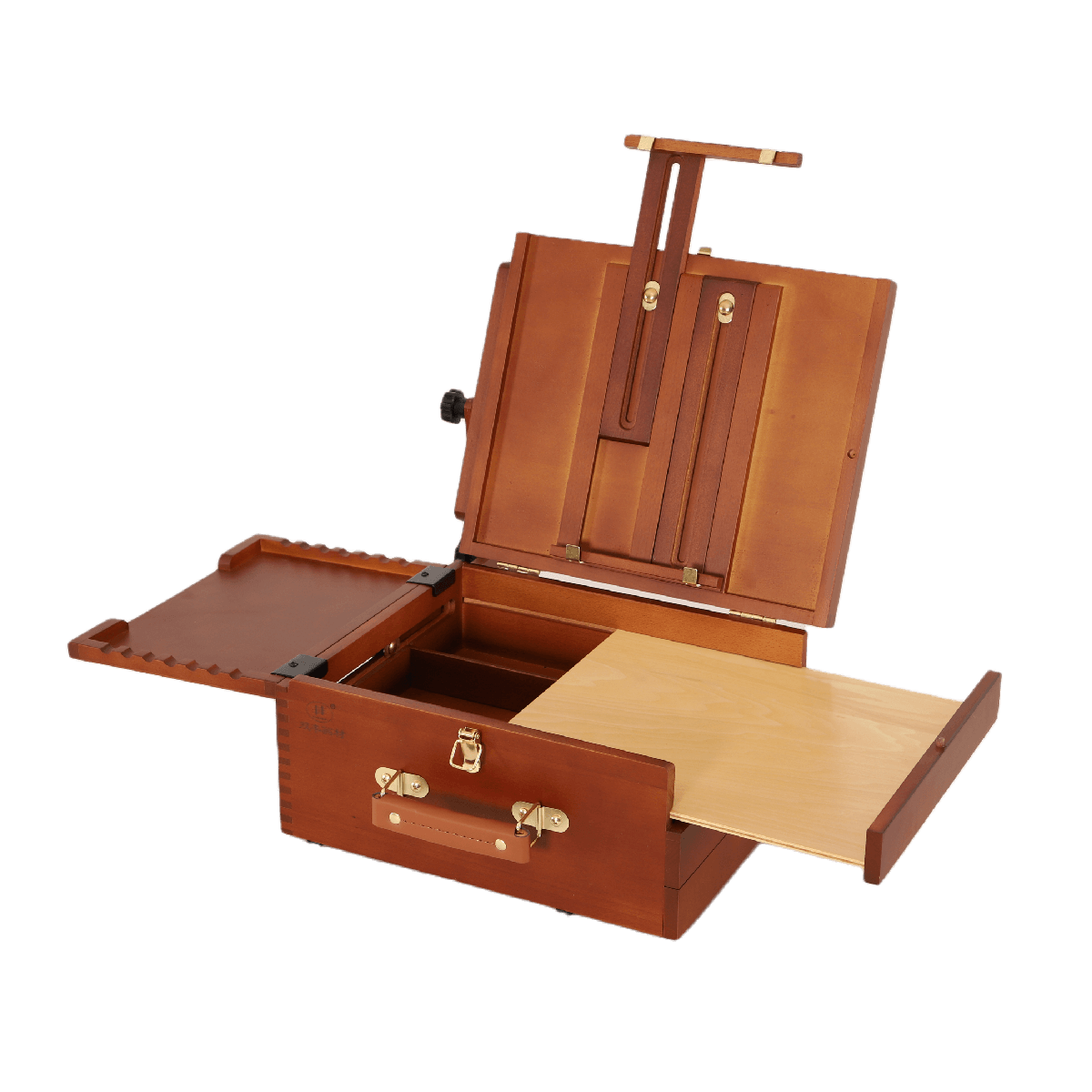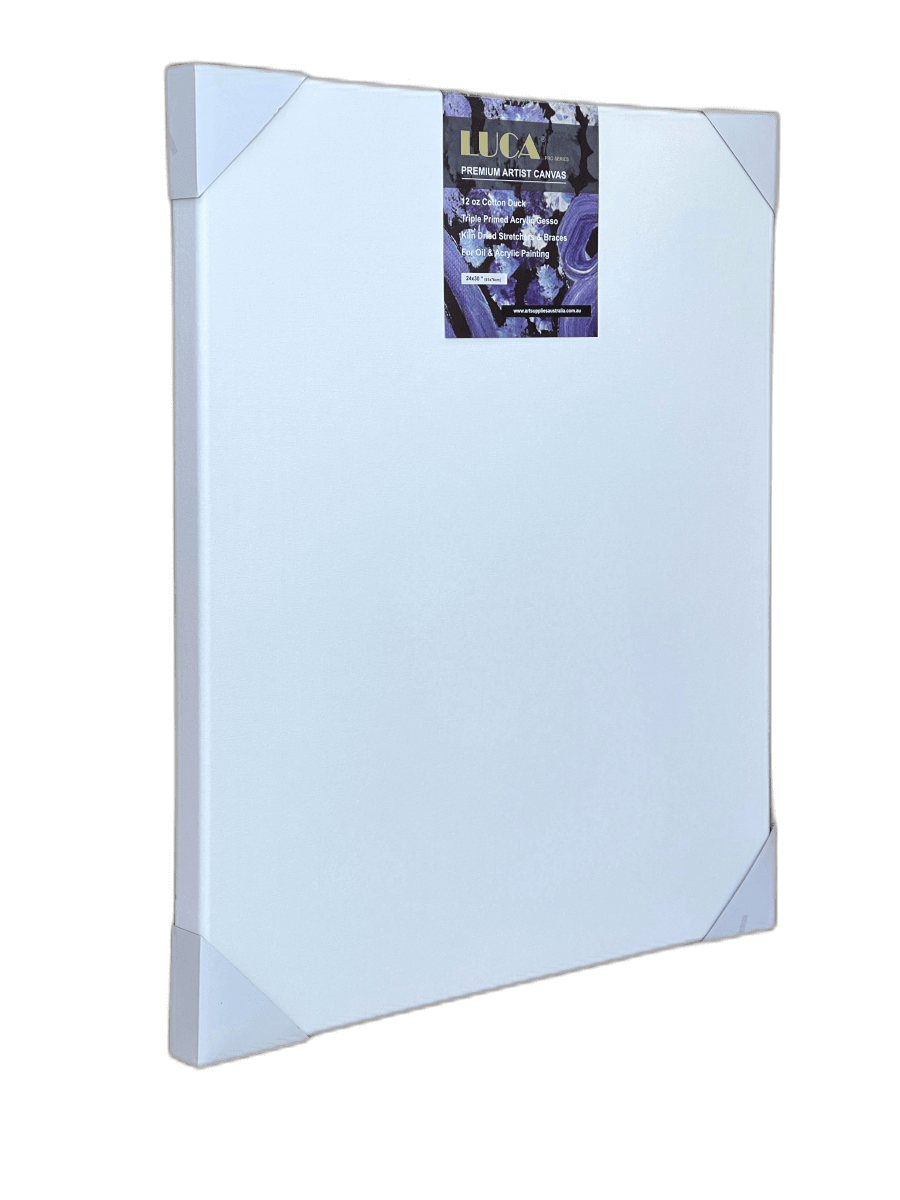Are you looking to create a masterpiece on canvas board? The quality of your painting depends heavily on how well you prepare your canvas board. With proper preparation, your paint may adhere well to the surface, or the colours may appear muted. But don't worry; we've covered you with these five tips to ensure your canvas board is adequately prepared for painting.
Firstly, we'll discuss the importance of choosing the right type of canvas board for your painting style. Then, we'll dive into the crucial step of priming your canvas board for an even surface. Next, we'll explore the often-overlooked step of sanding your canvas board for optimal adhesion and smoothness. Additionally, we'll provide essential tips for preparing the surface of your canvas board and applying a ground layer to achieve your desired texture and tone.
By the end of this article, you'll have all the knowledge you need to prepare your canvas board for painting properly. Let's get started!
Tip #1: Choosing the Right Canvas Board
Choosing the right canvas board is an essential step in preparing for painting. With so many different canvas boards available, selecting the one that suits your painting style and desired outcome is critical.
Types of Canvas Boards
Cotton Canvas Boards: These are the most common type of canvas boards and are ideal for beginners and intermediate painters. They have a smooth surface and are available in a variety of sizes.
Linen Canvas Boards: These are more expensive than cotton canvas boards and have a coarser surface. However, sessional artists prefer them because they have a unique texture and are more durable than cotton canvas boards.
Synthetic Canvas Boards: These are made from synthetic materials such as polyester and are designed to mimic the look and feel of traditional canvas boards. They are cheaper than cotton and linen canvas boards but may have a different level of quality.
Choosing the Right Canvas Board
Consider the style of painting you will be doing. For example, creating a detailed picture may be better for a smoother canvas board. On the other hand, for a more textured painting, a coarser canvas board may be preferred.
Think about the desired outcome of your painting. For example, linen canvas boards may be the best option for a more traditional look. However, experimenting with different techniques may make a synthetic canvas board more cost-effective.
Take into account your budget. Cotton canvas boards are the most affordable, while linen canvas boards can be more expensive. Synthetic canvas boards are an excellent budget-friendly option.
Examples of When to Use Each Type of Canvas Board:
Cotton Canvas Boards: Ideal for beginners and intermediate painters who want to experiment with different techniques or create a painting with fine details.
Linen Canvas Boards: Best for professional artists who want a more traditional look and texture to their paintings or for those who want a more durable canvas board.
Synthetic Canvas Boards: An excellent option for artists on a budget or those wanting to try different painting styles without investing in more expensive canvas boards.
Choosing the right canvas board is a crucial step in ensuring the success of your painting. By considering your painting style, desired outcome, and budget, you can select the perfect canvas board for your needs.
Tip #2: Priming the Canvas Board
Priming your canvas board is an essential step in preparing for painting. Priming creates a smooth, even surface for the paint to adhere to and helps to protect the canvas board from deteriorating over time. Here's what you need to know about priming your canvas board:
What is Priming?
Priming is applying a preparatory coating to your canvas board before painting. It creates a barrier between the paint and the canvas board, allowing the paint to adhere better and reducing the risk of the canvas board absorbing the colour.
Types of Primers:
Acrylic Gesso: This is the most common type of primer artists use. It dries quickly, has a toothy surface for the paint to adhere to, and can be used on various surfaces, including canvas boards.
Oil Gesso: This primer is similar to acrylic gesso but is designed specifically for oil paints. It has a smoother surface than acrylic gesso, making it more difficult for the paint to adhere to.
Rabbit Skin Glue: This traditional primer is made from animal glue and is used to create a smooth, non-absorbent surface for painting. It is often used for restoration purposes.
How to Properly Prime Your Canvas Board
- Start by applying a thin primer layer to your canvas board using a brush or roller. Be sure to apply the primer evenly and cover the entire surface of the canvas board.
- Allow the primer to dry completely before applying a second coat. This will help to ensure that the surface is smooth and even.
- Sand the surface of the canvas board lightly with fine-grit sandpaper after each coat of primer has dried. This will help create a smoother texture and remove brush marks or imperfections.
Tips for Achieving a Smooth and Even Primed Surface:
- Use a quality primer specifically designed for your type of paint.
- Apply thin layers of primer to avoid creating a thick, uneven surface.
- Allow the primer to dry completely between coats to ensure a smooth surface.
- Sand the surface of the canvas board lightly between coats to remove any imperfections.
By properly priming your canvas board, you can create a surface that is ready for painting and will help ensure your artwork's longevity.
Tip #3: Sanding the Canvas Board
Sanding your canvas board is essential in preparing the surface for painting. Sanding creates a smooth surface, allowing the paint to adhere better and providing a more even finish. Here's what you need to know about sanding your canvas board:
Why Sanding is Important Before Painting:
Sanding your canvas board helps to remove any rough spots or imperfections that may have occurred during the priming process. It also helps to smooth out the surface of the canvas board, providing a more even surface for your paint to adhere to.
Types of Sandpaper
Fine-grit Sandpaper: This is the most common type of sandpaper for sanding canvas boards. It typically has a grit of between 120 and 220 and creates a smooth surface without removing too much primer.
Extra-Fine Grit Sandpaper: This sandpaper has a grit of 320 or higher and creates a highly smooth surface. It's ideal for finishing touches on a painting.
How to Properly Sand Your Canvas Board
- Start by lightly sanding the entire surface of the canvas board with a fine-grit sandpaper. This will help to smooth out any imperfections or rough spots.
- Be sure to sand in the direction of the grain of the canvas board to avoid damaging the fibres.
- After sanding, wipe the surface of the canvas board with a clean, dry cloth to remove any dust or debris.
Tips for Avoiding Common Sanding Mistakes
- Refrain from sand too aggressively, as this can damage the surface of the canvas board.
- Avoid sanding too much in one spot, as this can create a depression in the surface of the canvas board.
- Always sand in the direction of the grain of the canvas board to avoid damaging the fibres.
- Be sure to wipe the surface of the canvas board with a clean, dry cloth after sanding to remove any dust or debris.
Properly sanding your canvas board can create a smooth surface with an excellent foundation for your painting. It may seem like a small step, but it can make a big difference in the outcome of your artwork.
Tip #4: Preparing the Surface for Painting
Preparing the surface of your canvas board before painting is crucial to achieving a smooth and even finish. Here's what you need to know about properly preparing your canvas board:
The Importance of Preparing the Surface Before Painting
Preparing the surface of your canvas board before painting helps to ensure that your paint will adhere correctly and that you'll achieve a smooth and even finish. Please prepare your canvas board to ensure your paint adheres properly, and the outcome of your painting may not look as you intended.
How to Properly Clean and Prepare the Surface of Your Canvas Board
- Begin by wiping the surface of your canvas board with a clean, dry cloth to remove any dust or debris.
- Next, use a damp cloth to clean the surface of the canvas board. Be sure to wash the fabric well to avoid watering the canvas board.
- If the canvas board is foul, add mild soap to the water to help clean it. However, rinse the canvas board well with clean water afterwards to remove any soap residue.
- Allow the canvas board to dry completely before painting on it.
Tips for Avoiding Common Preparation Mistakes
- Don't use harsh chemicals or abrasive materials to clean your canvas board, as this can damage the surface.
- Avoid using too much water when cleaning your canvas board, as this can cause the canvas to stretch or warp.
- Be sure to allow your canvas board to dry completely before painting on it, as painting on a damp surface can cause the paint to peel or crack.
By properly cleaning and preparing the surface of your canvas board, you can ensure that your painting will adhere correctly and that you'll achieve a smooth and even finish. Taking the time to prepare your canvas board properly is an essential step in the painting process, and it will ultimately help you create beautiful artwork.
Tip #5: Using a Ground Layer
A ground layer is a preparatory layer applied to a canvas board before the painting begins. It provides a surface that is easy to work on and improves the adhesion of the paint to the canvas board. This tip will discuss the importance of using a ground layer, the available types, and how to properly apply them.
Defining Ground Layer and Its Importance
A ground layer is a coating applied to the canvas board to create a surface receptive to paint. With a ground layer, the colour may adhere well to the canvas board, leading to uneven or patchy application. A ground layer also provides a protective coating to prevent the canvas board from deteriorating over time.
Different Types of Ground Layers
There are several types of ground layers that artists can use, each with its unique properties and benefits. Some of the most common types include:
- Acrylic gesso: This is the most popular type of ground layer artists use today. It is made of acrylic polymer and provides a bright, white surface that is perfect for painting.
- Oil-based gesso: This ground layer is made of oil and chalk and dries to a hard, opaque surface suitable for oil painting.
- Rabbit skin glue: This traditional ground layer is made by dissolving rabbit skin glue in water and applying it to the canvas board. It creates a translucent surface that is ideal for oil painting.
Applying a Ground Layer
To apply a ground layer to your canvas board, follow these steps:
- Start by ensuring your canvas board is clean and free of dust or debris.
- Apply the ground layer using a brush, roller, or spray. Be sure to apply it evenly and in thin layers.
- Allow the ground layer to dry completely before applying the paint.
- Sand the surface lightly with fine-grit sandpaper before painting to ensure a smooth surface.
Tips for Achieving the Desired Texture and Tone
To achieve the desired texture and tone with your ground layer, follow these tips:
- Experiment with different ground layers to find the best one.
- Apply multiple layers of the ground layer to create a more textured surface.
- Mix pigments with the ground layer for a specific colour tone.
Using a ground layer is essential in preparing your canvas board for painting. It provides a surface that is receptive to paint and improves the adhesion of the paint to the canvas board. By following the tips outlined in this article, you can achieve a smooth and even ground layer that will enhance the overall quality of your painting.
Conclusion:
Preparing your canvas board properly is crucial to ensure the success of your painting. Following these five tips, you can create a smooth, even surface that will allow your paint to adhere correctly and produce the desired effect.
To summarize, the five tips are:
- Choosing the right canvas board
- Priming the canvas board
- Sanding the canvas board
- Preparing the surface for painting
- Using a ground layer
Remember, experimenting with different techniques can help you find the best approach for your painting style. So don't be afraid to try new things and see what works for you.
If you're looking for additional resources or tools to help you prepare your canvas board, Art Supplies Australia has a wide range of art canvas and other supplies to help you achieve your desired results.
So, what are you waiting for? Start preparing your canvas board, and let your creativity run wild!
Are you looking for high-quality art supplies? Visit Art Supplies Australia today and browse our selection of art canvas and other supplies to help you bring your artistic vision to life.







